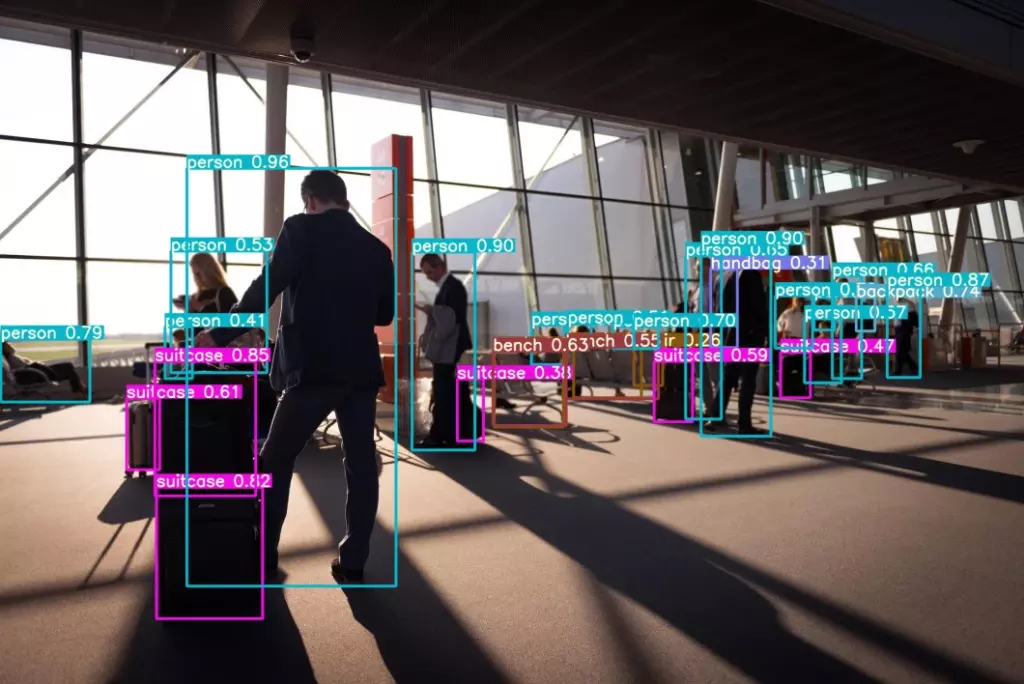Computer vision models are always expected to provide the most accurate results. For that, it is necessary to train them previously with the largest possible dataset.
However, in many cases, the amount of data available is not sufficient. The concept of data augmentation in images aims precisely at creating synthetic data to be completed when needed.
Let’s suppose that an application needs to identify the deterioration in a roof. It is difficult to find an image bank in that organization that shows all possible levels and types of deterioration. The solution: create the eventual gaps. This is just one example. There are an enormous number of situations in which this same concept is applied.
A review of the computer vision concept

It is worth remembering that computer vision is a technology that allows machines to analyze digital photos and videos. The objective? To extract meaning from them.
To achieve that result, it successfully combines image processing with machine learning and advanced analytics.
Thus, it is able to recognize objects or faces, identify patterns or anomalies or understand medical images, among many other applications. Including many of those we design in our Data & Innovation area.
Its use is increasingly popular in industries such as healthcare, entertainment and digital media, manufacturing, agribusiness and, especially, security and video surveillance.
In all cases, the purpose is the same: to take advantage of images to turn them into actionable information for the business.
Uses of data augmentation in images
Among the reasons for generating synthetic data to train computer vision models are the increase in both the size of the data set and its diversity.
Returning to the previous example, there could be a hundred photos available on the deteriorated roof, but all with a similar or identical level. With data augmentation, this base is also expanded.
In the same approach, the creation of synthetic data ensures that all possible conditions and scenarios are covered, with no room for error or omissions.
Another use is to speed up labeling, since it can be performed automatically on the generated data. This is not always possible or straightforward on a real data set.
Finally, there is a reason linked to data security and privacy. With synthetic data, the real data is guaranteed to be protected. This applies particularly to cases where confidential information is involved.
Image data augmentation techniques
There are several data augmentation techniques in images. Some of the most tested ones are:
- Flipping: It consists of rotating images both horizontally and vertically. It is estimated that with this technique it is possible to double or quadruple the original amount of data.
- Rotation: Consists of rotating the image at different angles, taking care at all times that the original dimensions are preserved at the end of the operation. Again, the increase factor in the amount of data is estimated to be double to quadruple, although it could be even higher.
- Scaling: This consists of changing the scale of the image. It can be done outward (the resulting image will be larger than the original). Also inward (smaller). The magnification factor depends on the amount of scaling done on the same image.
- Random cropping: Consists in taking a random sample of a section of the original image. As with scaling, the magnification factor is arbitrary.
- Translation: Involves moving the image along the X-axis or Y-axis, or both, from its original position. Again, the magnification factor is arbitrary and will depend on the number of translations performed for each image.
Technologies available in AWS
AWS has Amazon Bedrock, which is a managed service that allows us to access generative models capable of generating synthetic data from a set of real data and prompts.
Amazon Bedrock is a managed service that offers access to a wide selection of FMs (foundational models), which are models capable of generating new and original content from an input stimulus. These FMs have the particularity that they are high-performance models provided by different leading AI companies (as is AWS).
Amazon Rekognition is a managed service that enables the development of Computer Vision capabilities and models. Particularly with Rekognition, custom labels can be made by which various data augmentations are performed for model training, such as random image cropping, color fluctuation and random Gaussian noises. Instead of employing thousands of images, you can upload only a small set of training images (usually a few hundred less) specific to your use case to the easy-to-use console.
Conclusions
Computer vision is a branch of artificial intelligence (AI) that brings great value to the business. It extracts actionable information from images and videos.
Data augmentation strategies allow organizations to generate synthetic datasets to optimize the training of computer vision models and obtain the best possible results.
It solves both the need for quantity of data and the need for diversity or labeling. Paradoxically, success will be in sight.
Does your organization need professional help to drive initiatives based on computer vision? At Nubiral, we have the experience, the experts and the knowledge to lead you on this journey. We look forward to hearing from you: Schedule your meeting!
You might be interested in:
Blog • Computer Vision: Possibilities and applications
Blog • Generative AI: Code Development Scope
Blog • When artificial intelligence gets creative




